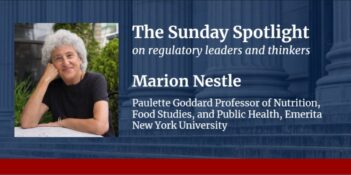
Federal food program proposes increasing eligibility for school breakfast and lunch subsidies.
Schools nationwide could more easily provide free meals to millions of students under a rule proposed in March by the Food and Nutrition Service, an office within the U.S. Department of Agriculture (USDA).
Despite congressional efforts to reduce child hunger, accelerated food price inflation and the expiration of expanded child tax credits that had been provided under the 2021 American Rescue Plan have caused food insecurity to spike over the last year. At present, nearly 24 percent of households with children experience food instability and nutritional deficit.
Responding to this trend, USDA proposes expanding access to the Community Eligibility Provision (CEP). Authorized by the Healthy, Hunger-Free Kids Act of 2010, CEP enables eligible schools and districts to offer breakfast and lunch to all enrolled students at no-cost, without collecting household income applications.
To qualify for CEP, a school or district must meet an established identified student percentage (ISP) on April 1 of the prior school year. The ISP is the percentage of enrolled students already certified for free meals through participation in other means-tested programs, such as the Supplemental Nutrition Assistance Program (SNAP). Once approved, a school or district receives reimbursement from USDA at the federal free rate, or 1.6 multiplied by the ISP. Schools then pay for costs exceeding reimbursement with non-federal resources, such as funds from state agencies and profits from à la carte food sales.
At present, USDA sets the ISP at 40 percent. The new rule would lower the eligibility percentage to 25 percent.
In addition to lowering the ISP, the USDA intends for the proposed rule to minimize the stigma and fiscal burden associated with federal assistance by eliminating unpaid meal debt that students accumulate when they cannot pay at point of sale. Combined with CEP’s sourcing eligibility data from other federal assistance programs, these provisions aim to streamline program efficiency and increase student reach.
In a call with reporters, USDA Secretary Tom Vilsack lauded the proposed rule’s benefits, which he claimed would include eliminating the administrative workload of collecting and verifying free meal applications and combatting child hunger. He praised schools that have successfully implemented CEP stating that “we applaud their leadership in nourishing children and hope this proposed change will make it possible for more schools and states to follow suit.”
The USDA’s proposed rule follows the announcement of President Biden’s budget for the 2024 fiscal year, which proposes increasing CEP funding by $15 million to serve 9 million more children. Broadened funding is consistent with the White House’s commitment to ending hunger in America by 2030.
Many commenters support the proposed change. One commenter explained that her district—which would become eligible if the rule is adopted—needs the coverage “because we live in a rural, impoverished area where some students only eat at school.”
CEP expansion also garners support from a variety of organizations, such as the National Association of Counties and the Food Research and Action Center. Representatives from these organizations argue that the amendment will make strides toward fueling greater health, learning, and development.
Lowering the ISP, however, does not imply that now-eligible schools will opt into CEP, especially if the federal government is not picking up the full tab, says Tara Thomas, a policy analyst for the American Association of School Administrators. In her view, CEP eligibility expansion will most impact those states that have universal free school meal laws. She argues that districts in these states will “participate because they’re not worrying about additional costs.” These districts apparently know that their states will cover excess expenses.
Although Thomas hopes the rule change will motivate other states to pass universal school meal laws, the issue of how schools will pay for non-reimbursed meals remains. Some commenters on the proposed rule echo this concern, with one writing that “asking districts to utilize non-federal funding to implement this is a heavy lift considering all the other financial burdens we have experienced due to record high inflation.” This critic suggests that increasing the federal free rate multiplier from 1.6 to 1.75 will make the amendment more attractive to districts.
Should USDA go forward in the final rule to implement its proposed CEP expansion, the amount of federal resources allocated to the program will still depend on congressional approval of the 2024 fiscal budget. Because CEP does not increase federal funds, but rather establishes how those funds can be dispersed, the program’s reach may depend on its budget allocation. Furthermore, USDA derives the federal free rate multiplier from statute, such that an increase would also require congressional approval.
Changes to nutrition programs, however, often spark considerable partisan debate among lawmakers. For example, several prominent Republicans have proposed cutting SNAP in recent months as part of an ongoing conflict over the debt ceiling and farm bill, which is up for renewal this year. Significant modifications to SNAP and other federal assistance programs would affect millions of low-income households and could potentially complicate CEP eligibility requirements.



